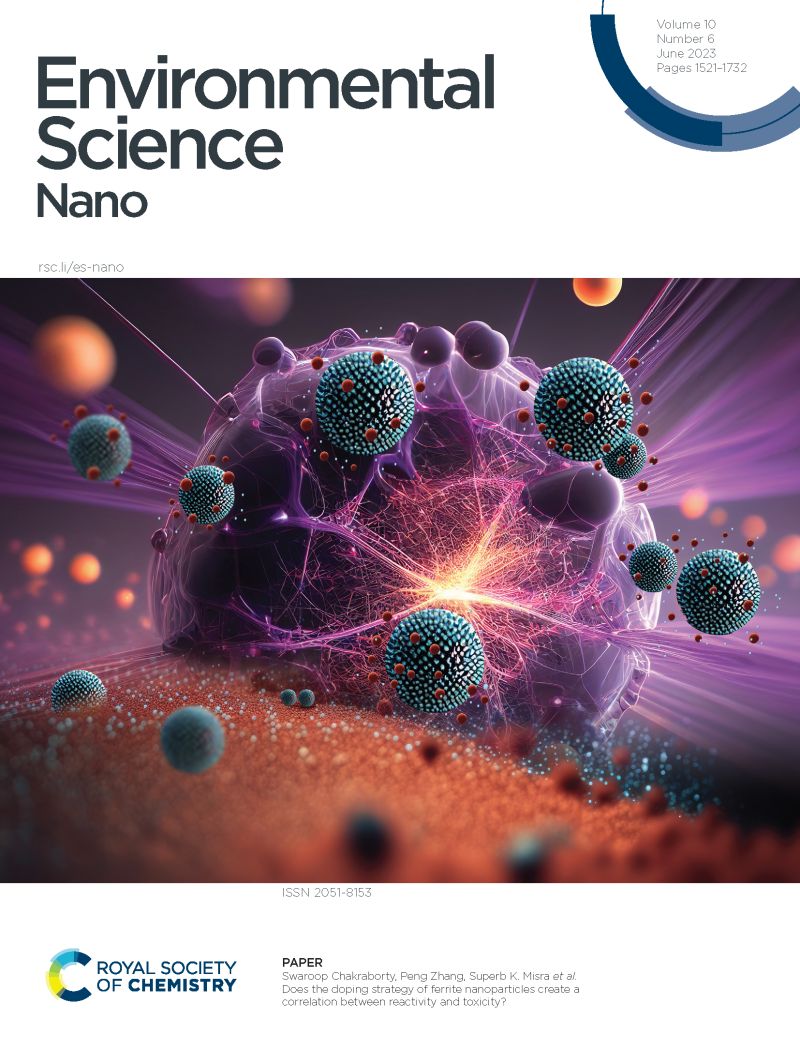Synergistic Effects of Iron Oxide Nanoparticles and Hydrogen Peroxide in Inhibiting Pseudomonas aeruginosa Growth to Combat Bacterial Contamination in Water Recovery Systems
IF 5.8
2区 环境科学与生态学
Q1 CHEMISTRY, MULTIDISCIPLINARY
引用次数: 0
Abstract
Access to safe water is critical for public health. Pseudomonas aeruginosa is ranked as one of the most significant bacterial pathogens, threatening human health. Hydrogen peroxide and other biocides are often used to prevent the growth of bacteria, but the toxicity of these biocides is a major consideration when bacteria grow in water sources. This study explores the application of iron oxide nanoparticles (IONPs), both bare and polyacrylic acid-coated (PAA@IONPs), to enhance the effectiveness of hydrogen peroxide in eliminating P. aeruginosa, potentially reducing the required biocide concentrations and minimizing toxicity. X-ray diffraction crystallography (XRD) alongside X-Ray photoelectron spectroscopy (XPS) showed that the synthesized IONPs were magnetite nanoparticles and Fourier-transform infrared (FTIR) spectroscopy proved that PAA coating was successfully functionalized to IONPs. The hydrodynamic size of the IONPs decreased from 106 ± 11 nm to 84 ± 3 nm when coated with PAA. Transmission electron microscopy (TEM) images confirmed a similar decrease in dry size from 16 ± 3 nm to 9 ± 2 nm post-coating. A week after storage, there was a decrease in the concentration of stored IONPs and PAA@IONPs due to settling by 56 ± 14% and 22.6 ± 0.6%, respectively, demonstrating that PAA coating increased colloidal stability of the IONPs. Coated nanoparticles exhibited a more negative zeta potential, which was also indicative of greater colloidal stability. In the presence of 3.65 mg/ml IONPs and 182.25 mM of hydrogen peroxide, overnight bacterial growth was reduced by more than 63% compared to the sample with hydrogen peroxide alone. IONPs did not inhibit bacterial growth in the absence of hydrogen peroxide. Presence of 3.65 mg/ml IONPs and 182.25 mM of hydrogen peroxide killed 90.2% of bacterial cells during one hour of exposure. These findings indicate the potential benefit of IONPs to combat bacterial growth, which could be applied in industrial settings to reduce the biocide concentration needed to curb bacterial development.求助全文
约1分钟内获得全文
求助全文
来源期刊

Environmental Science: Nano
CHEMISTRY, MULTIDISCIPLINARY-ENVIRONMENTAL SCIENCES
CiteScore
12.20
自引率
5.50%
发文量
290
审稿时长
2.1 months
期刊介绍:
Environmental Science: Nano serves as a comprehensive and high-impact peer-reviewed source of information on the design and demonstration of engineered nanomaterials for environment-based applications. It also covers the interactions between engineered, natural, and incidental nanomaterials with biological and environmental systems. This scope includes, but is not limited to, the following topic areas:
Novel nanomaterial-based applications for water, air, soil, food, and energy sustainability
Nanomaterial interactions with biological systems and nanotoxicology
Environmental fate, reactivity, and transformations of nanoscale materials
Nanoscale processes in the environment
Sustainable nanotechnology including rational nanomaterial design, life cycle assessment, risk/benefit analysis
 求助内容:
求助内容: 应助结果提醒方式:
应助结果提醒方式:


